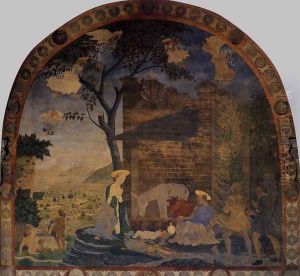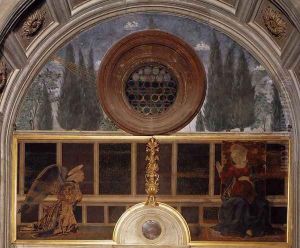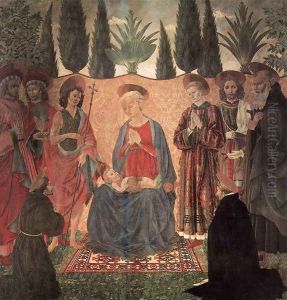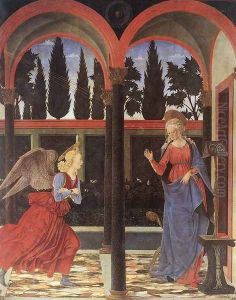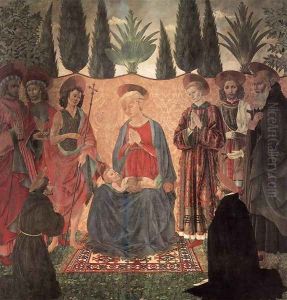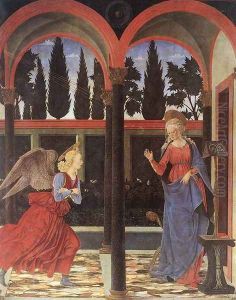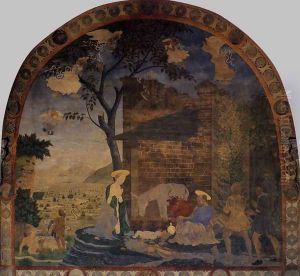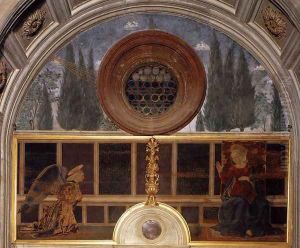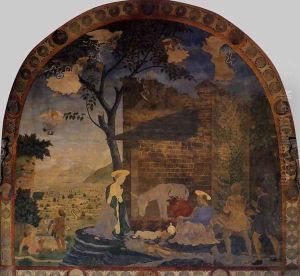Baldovinetti Alessio Paintings
Alessio Baldovinetti, born in Florence in 1425, was an Italian painter of the early Renaissance, recognized for his detailed and innovative techniques in fresco and egg tempera. He was deeply influenced by the Florentine artistic environment, particularly by the works of Domenico Veneziano and Fra Angelico, from whom he inherited a luminous and clear palette that was characteristic of his style. Baldovinetti's approach to art was meticulous, characterized by his keen observation of nature and a pioneering use of underpainting in white to enhance the vibrancy of his colors.
Baldovinetti was not just a painter; he was also known for his work in mosaic and stained glass, showcasing his versatility as an artist. His contributions to fresco painting, especially his experiments with the 'encausto' technique, which involved using wax to fix the pigments, were significant, albeit not always successful in terms of their longevity. One of his most notable frescoes, the 'Annunciation' in the cloister of the Santissima Annunziata in Florence, highlights his skills in creating detailed naturalistic landscapes that serve as backgrounds to religious scenes.
Despite his innovative techniques and contributions to the Renaissance art movement, Baldovinetti's work was somewhat overshadowed by the achievements of his more famous contemporaries, such as Sandro Botticelli and Domenico Ghirlandaio. However, his meticulous approach to painting, particularly his attention to detail and his experimental attitude towards materials and techniques, left a lasting impact on the artists of his time and those who followed. Alessio Baldovinetti passed away in 1499 in Florence, leaving behind a legacy that, while not as widely recognized as that of some of his peers, significantly contributed to the development of Renaissance art in Italy.
